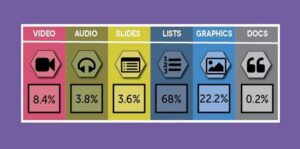How To Turn Employees Into Active Users of Corporate Knowledge
Launching their knowledge management initiatives, organizations often resemble oil extraction companies. They start to drill their knowledge wells and rub their hands in anticipation of
Launching their knowledge management initiatives, organizations often resemble oil extraction companies. They start to drill their knowledge wells and rub their hands in anticipation of

It may seem like a fine line between #TChat events and controlled chaos, but there’s more here than meets the eye. Our community considers the why and how of crowdsourcing

How does your digital content compare with popular blogs? And what can you do to improve? See what a TalentCulture audit revealed, and request a free audit for your site…

In today’s connected world of work, how can we make the most of tools and techniques that help us curate and share collective wisdom?

What does a future-ready workforce look like? Business collaboration and learning expert Dan Pontefract says it features a special kind of leader
By definition, learning is a social function. How can business leverage this more fully to develop talent in the world of work? This week, we dug deep to explore the possibilities…
What does it mean to apply emerging social tools and techniques to the process of continuous learning? And why does it matter for individual professionals and the organizations we serve? Let’s talk about it!
Long before the digital age arrived, with its unrelenting firehose of disruptive technologies, the terms “social”, “learning” and “business” made sense within the same sentence. Today’s workplace just exposes the relationship more than ever. But how can organizations make the most of new-school learning possibilities?
What’s your morning communications, social media routine like? Mine’s getting more complicated every day. Personally, just email requires checking at least three accounts on three
How can your organization make collaboration a competitive advantage? Here are some great ideas to put your workforce on the right track…
Crowdsourcing is using an open call for tasks, information or data collection mostly through new media technology. Many times, a passionate crowd is much more powerful than an individual, business or closed community.